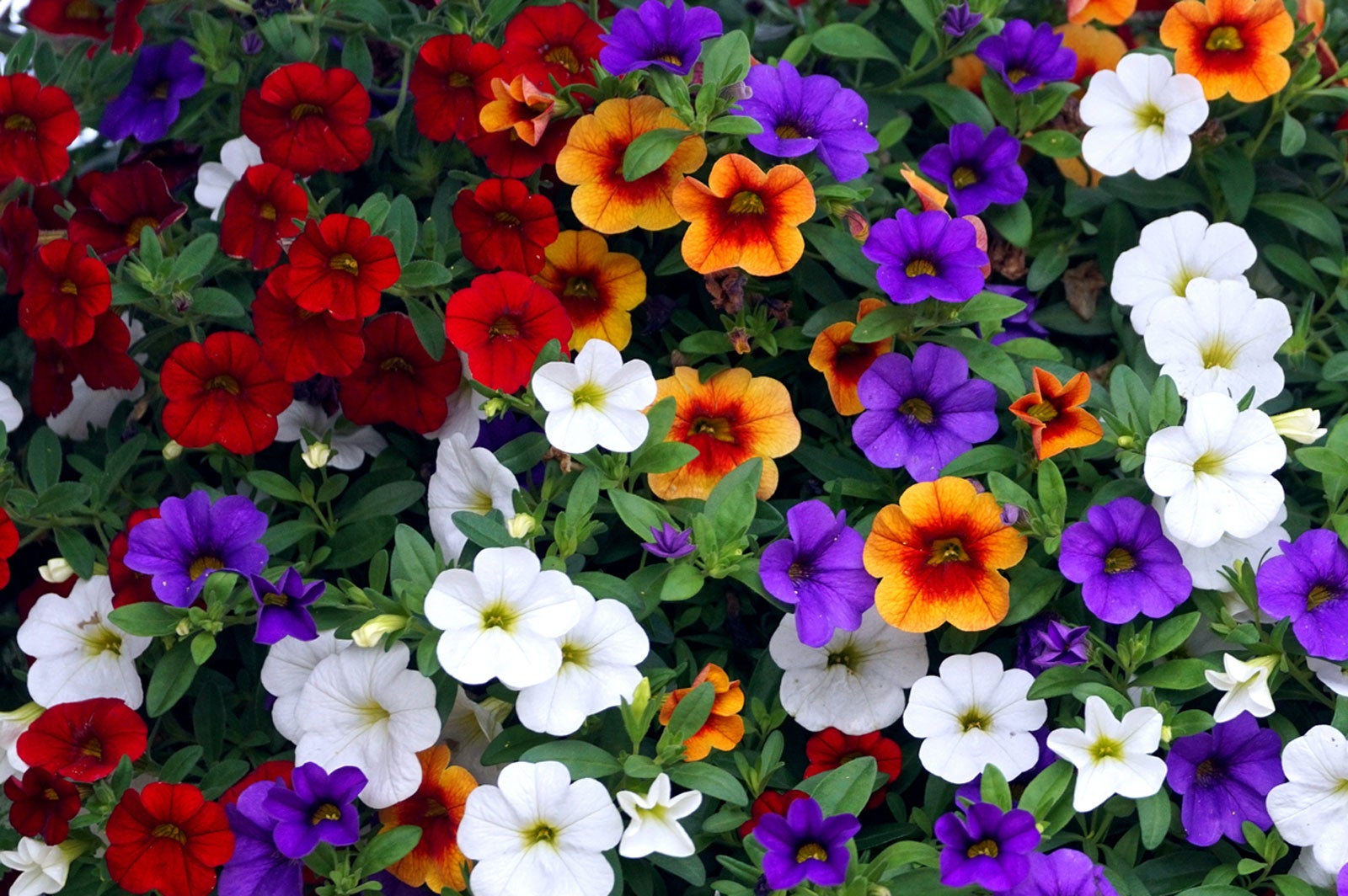The Delightful Dichotomy of Calibrachoa: A Comprehensive Guide
Calibrachoa, often affectionately called “Million Bells,” has captivated gardeners worldwide with its profusion of vibrant, petunia-like blooms. While often mistaken for its larger cousin, the petunia, Calibrachoa boasts unique characteristics that make it a standout choice for containers, hanging baskets, and borders. This comprehensive guide delves into the intricate details of this charming plant, exploring its history, cultivation, varieties, and common challenges.
Calibrachoa, a genus within the Solanaceae family, was initially classified as a part of the Petunia genus. However, in the late 20th century, botanists recognized distinct differences, leading to its reclassification. The primary distinction lies in the chromosome count and the plant’s overall growth habits. Native to South America, particularly southern Brazil, Uruguay, and Argentina, Calibrachoa thrives in warm, temperate climates.

The popularity of Calibrachoa surged in the 1990s, driven by extensive breeding efforts that produced a kaleidoscope of colors and improved disease resistance. Today, its widespread availability and ease of cultivation have cemented its status as a garden favorite.
Calibrachoa distinguishes itself from petunias in several key ways:
Flower Morphology
Smaller blooms: Calibrachoa flowers are typically smaller than petunia blossoms, measuring about one inch in diameter.
Growth Habits
:strip_icc()/calibrachoa-Mini-Famous-Double-Yellow-01-hero-8a00c7dc98224488b55c05176ec8503c.jpg)
Trailing growth: Calibrachoa exhibits a cascading or trailing growth habit, making it ideal for hanging baskets and containers.
Environmental Preferences
Sunlight: Calibrachoa thrives in full sun, requiring at least six hours of direct sunlight per day.
Successfully cultivating Calibrachoa involves careful attention to several key factors:
Planting and Propagation
Timing: The best time to plant Calibrachoa is in the spring, after the last frost has passed.
Watering and Fertilizing
Watering: Water Calibrachoa regularly, allowing the soil to dry slightly between waterings. Avoid overwatering, as it can lead to root rot.
Pruning and Maintenance
Pinching: Pinch back the tips of young plants to encourage branching and create a bushier form.
Extensive breeding efforts have produced a vast array of Calibrachoa varieties, each with unique colors, patterns, and growth habits. Some popular series include:
Million Bells Series
This is the classic series, known for its profusion of small, bell-shaped flowers in a wide range of colors.
Superbells Series
Bred for larger flowers and improved heat tolerance.
Callie Series
Features compact, mounding varieties with unique color patterns.
Double Calibrachoa
These varieties feature double petaled flowers, adding an extra level of texture and beauty.
While Calibrachoa is relatively easy to grow, it can be susceptible to certain challenges:
Root Rot
Caused by overwatering and poor drainage.
Iron Deficiency
Causes yellowing of the leaves, particularly new growth.
Pests
Aphids, spider mites, and whiteflies can infest Calibrachoa.
Petunia Budworm
These caterpillars will eat the buds and flowers of the plant.
Calibrachoa’s versatility makes it a perfect choice for various garden designs. Consider these creative combinations:
Hanging Baskets
Combine Calibrachoa with trailing plants like verbena, lobelia, or ivy geraniums.
Containers
Pair Calibrachoa with upright plants like geraniums, petunias, or salvia.
Borders
Use Calibrachoa as a colorful edging plant along borders and pathways.
Window Boxes
Calibrachoa is perfect for adding a pop of color to window boxes.
Calibrachoa’s enduring appeal lies in its vibrant colors, profusion of blooms, and ease of cultivation. Whether used in hanging baskets, containers, or borders, this charming plant adds a touch of whimsy and elegance to any garden. With proper care and attention, Calibrachoa will reward gardeners with a continuous display of color throughout the growing season, earning its rightful place as a beloved garden favorite.
